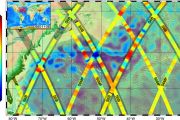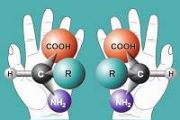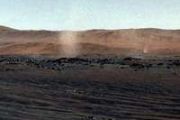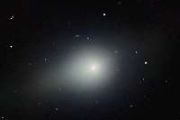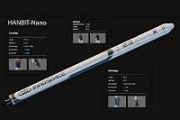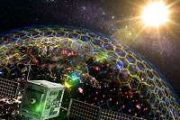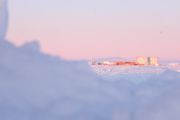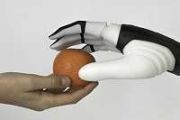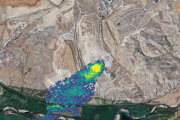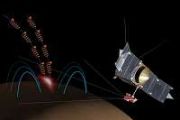
Copernical Team
ESA’s HydroGNSS Scout satellites ready for launch

After arriving at the California launch site at the end of September, the two HydroGNSS satellites have been carefully prepared for liftoff, scheduled this month.
HydroGNSS – a twin-satellite mission – marks the European Space Agency’s first ‘Scout’ venture. By harnessing signals from navigation satellites, HydroGNSS will help scientists gain new insights into key climate variables linked to water.
New Zealand plans space mission, satellite fleet: minister
 New Zealand is planning a national space mission which could see a small fleet of state-owned satellites launched into the skies over the Pacific nation, a minister told AFP on Wednesday.
"Actions to progress to a large-scale mission are being advanced," Minister for Space Judith Collins said.
The mission would involve sending up "one or more government-owned satellites" for "regular cov
New Zealand is planning a national space mission which could see a small fleet of state-owned satellites launched into the skies over the Pacific nation, a minister told AFP on Wednesday.
"Actions to progress to a large-scale mission are being advanced," Minister for Space Judith Collins said.
The mission would involve sending up "one or more government-owned satellites" for "regular cov Florida Space Coast doubleader: SpaceX launches, ULA scrubbed
 One of two planned launches from Cape Canaveral Space Force Station lifted off Wednesday night.
SpaceX's mission went off as scheduled but the United Launch Alliance flight scheduled for two hours later was scrubbed and delayed by at least 24 hours.
If both launches went off in the doubleheader, the yearly record of 93 from Florida will be tied. The other Space Coast site is the
One of two planned launches from Cape Canaveral Space Force Station lifted off Wednesday night.
SpaceX's mission went off as scheduled but the United Launch Alliance flight scheduled for two hours later was scrubbed and delayed by at least 24 hours.
If both launches went off in the doubleheader, the yearly record of 93 from Florida will be tied. The other Space Coast site is the Ariane 6 successfully lifts off from French Guiana
 A European Ariane 6 rocket blasted off from France's Kourou space base in French Guiana on Tuesday night, carrying a new environmental monitoring satellite, an AFP correspondent said.
Lift-off was at 6:02 pm local time (2102 GMT) and is the third commercial flight of the Ariane 6 launch system since the expendable rockets came into service last year.
The rocket was carrying a Sentinel-1D
A European Ariane 6 rocket blasted off from France's Kourou space base in French Guiana on Tuesday night, carrying a new environmental monitoring satellite, an AFP correspondent said.
Lift-off was at 6:02 pm local time (2102 GMT) and is the third commercial flight of the Ariane 6 launch system since the expendable rockets came into service last year.
The rocket was carrying a Sentinel-1D Trump again taps Musk ally Jared Isaacman to lead NASA
 President Donald Trump on Tuesday nominated billionaire entrepreneur and private astronaut Jared Isaacman to head NASA, again tapping the close associate of Elon Musk to lead the US space agency.
The nomination, announced by Trump on Truth Social, came six months after the president withdrew his initial nomination of Isaacman to lead NASA amid a bitter row with Musk.
If confirmed by the
President Donald Trump on Tuesday nominated billionaire entrepreneur and private astronaut Jared Isaacman to head NASA, again tapping the close associate of Elon Musk to lead the US space agency.
The nomination, announced by Trump on Truth Social, came six months after the president withdrew his initial nomination of Isaacman to lead NASA amid a bitter row with Musk.
If confirmed by the Space debris postpones Shenzhou XX astronauts Earth return
 The scheduled return of the Shenzhou XX astronauts from China's Tiangong space station has been halted for safety reasons following a probable impact with space debris, according to the China Manned Space Agency. The agency reported on Wednesday that the spacecraft charged with bringing three crew members home may have suffered strikes by minuscule orbital debris fragments.
"An impact anal
The scheduled return of the Shenzhou XX astronauts from China's Tiangong space station has been halted for safety reasons following a probable impact with space debris, according to the China Manned Space Agency. The agency reported on Wednesday that the spacecraft charged with bringing three crew members home may have suffered strikes by minuscule orbital debris fragments.
"An impact anal China's Mars orbiter captures detailed images of interstellar object 3I ATLAS
 The Tianwen 1 Mars orbiter operated by the China National Space Administration (CNSA) completed a close-range observation of the interstellar object designated 3I/ATLAS using its high-resolution camera. The spacecraft was positioned approximately 30 million kilometers from the object during the imaging process, achieving one of the nearest probe-based studies of 3I/ATLAS.
Data obtained fro
The Tianwen 1 Mars orbiter operated by the China National Space Administration (CNSA) completed a close-range observation of the interstellar object designated 3I/ATLAS using its high-resolution camera. The spacecraft was positioned approximately 30 million kilometers from the object during the imaging process, achieving one of the nearest probe-based studies of 3I/ATLAS.
Data obtained fro Solar Orbiter reveals rapid polar magnetic field drift on the Sun
 Data from ESA's Solar Orbiter spacecraft, collected during its unique vantage over the solar south pole, demonstrate that the Sun's magnetic field is carried towards the pole at speeds faster than previous models suggested. The measurements analyzed by researchers at the Max Planck Institute for Solar System Research incorporated Polarimetric and Helioseismic Imager (PHI) data from March 21, 202
Data from ESA's Solar Orbiter spacecraft, collected during its unique vantage over the solar south pole, demonstrate that the Sun's magnetic field is carried towards the pole at speeds faster than previous models suggested. The measurements analyzed by researchers at the Max Planck Institute for Solar System Research incorporated Polarimetric and Helioseismic Imager (PHI) data from March 21, 202 First comprehensive altitude mapping of blue aurora at 200 kilometers using hyperspectral imaging
 Researchers at the National Institutes of Natural Sciences have established a new method to determine the altitude distribution of blue aurora using a single hyperspectral camera. Inspired by laboratory plasma techniques, the team estimated auroral heights through analysis of sunlight-excited resonant scattering along the camera's line of sight.
Traditional approaches for capturing auroral
Researchers at the National Institutes of Natural Sciences have established a new method to determine the altitude distribution of blue aurora using a single hyperspectral camera. Inspired by laboratory plasma techniques, the team estimated auroral heights through analysis of sunlight-excited resonant scattering along the camera's line of sight.
Traditional approaches for capturing auroral 
 Image:
Swoosh!
Image:
Swoosh! 

